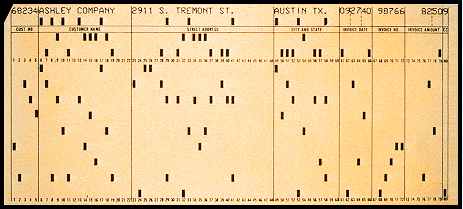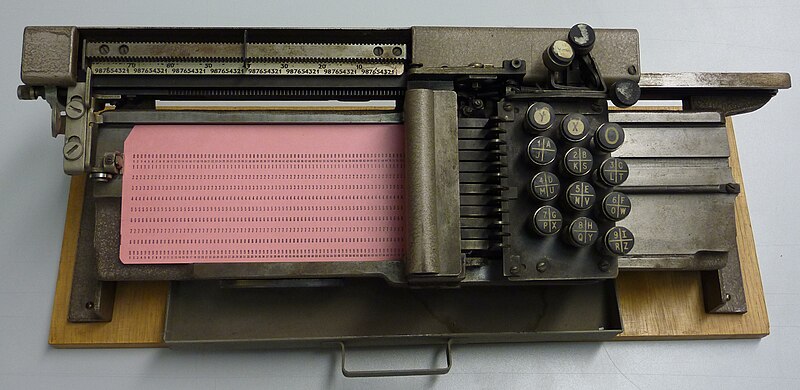Forgotten PC history: The true origins of the personal computer
So, to summarise, all this stuff is based on a 1968 design for a data terminal.
It explains a lot.
Card punch.
I seem to recall one of those.
Used these:

Weird plug-in cards with a 0.1" pitch connector on the solder side, and a 0.156" pitch connector on the component side.
Had to cobble together some sawn up connectors to make an extender card when the printer part went tits up.
Turned out to be a defective diode.
The ink rollers would sometimes explode and make a terrific mess.
Caution: ear defenders required during operation!
Depends on the format.
There are 12 bits per line, so you could get 12 x 72 bits per card.
General Automation PGS cards used to get 108 bytes per card, though a couple of those were used for the checksum.
73 to 80 were used for the id field so you could reassemble the deck if the rubber band failed.
So, to summarise, all this stuff is based on a 1968 design for a data terminal.
It explains a lot.

Originally posted by darmstadt
View Post
I seem to recall one of those.
Used these:

Weird plug-in cards with a 0.1" pitch connector on the solder side, and a 0.156" pitch connector on the component side.
Had to cobble together some sawn up connectors to make an extender card when the printer part went tits up.
Turned out to be a defective diode.
The ink rollers would sometimes explode and make a terrific mess.
Caution: ear defenders required during operation!
Originally posted by TimberWolf
View Post
There are 12 bits per line, so you could get 12 x 72 bits per card.
General Automation PGS cards used to get 108 bytes per card, though a couple of those were used for the checksum.
73 to 80 were used for the id field so you could reassemble the deck if the rubber band failed.








Comment